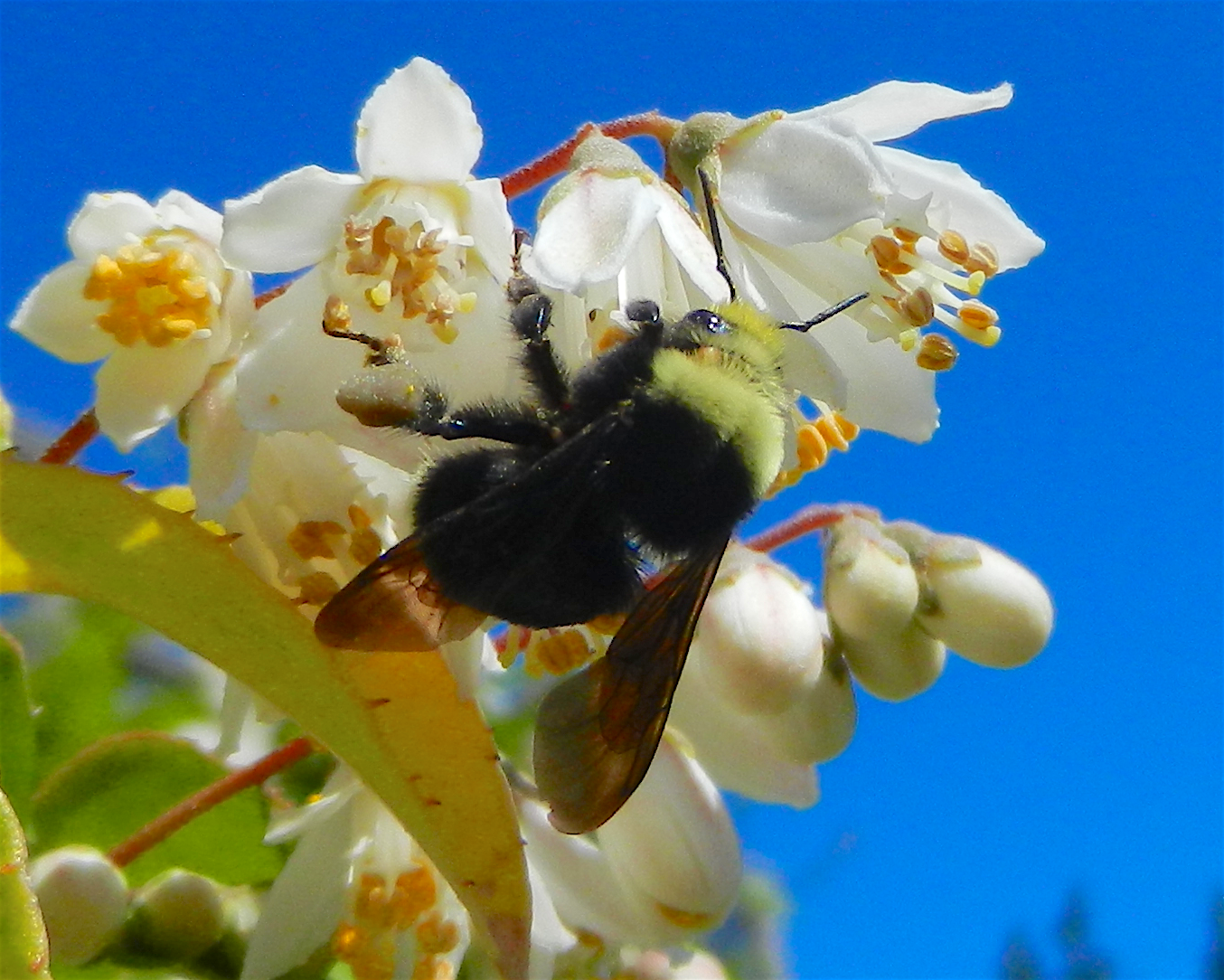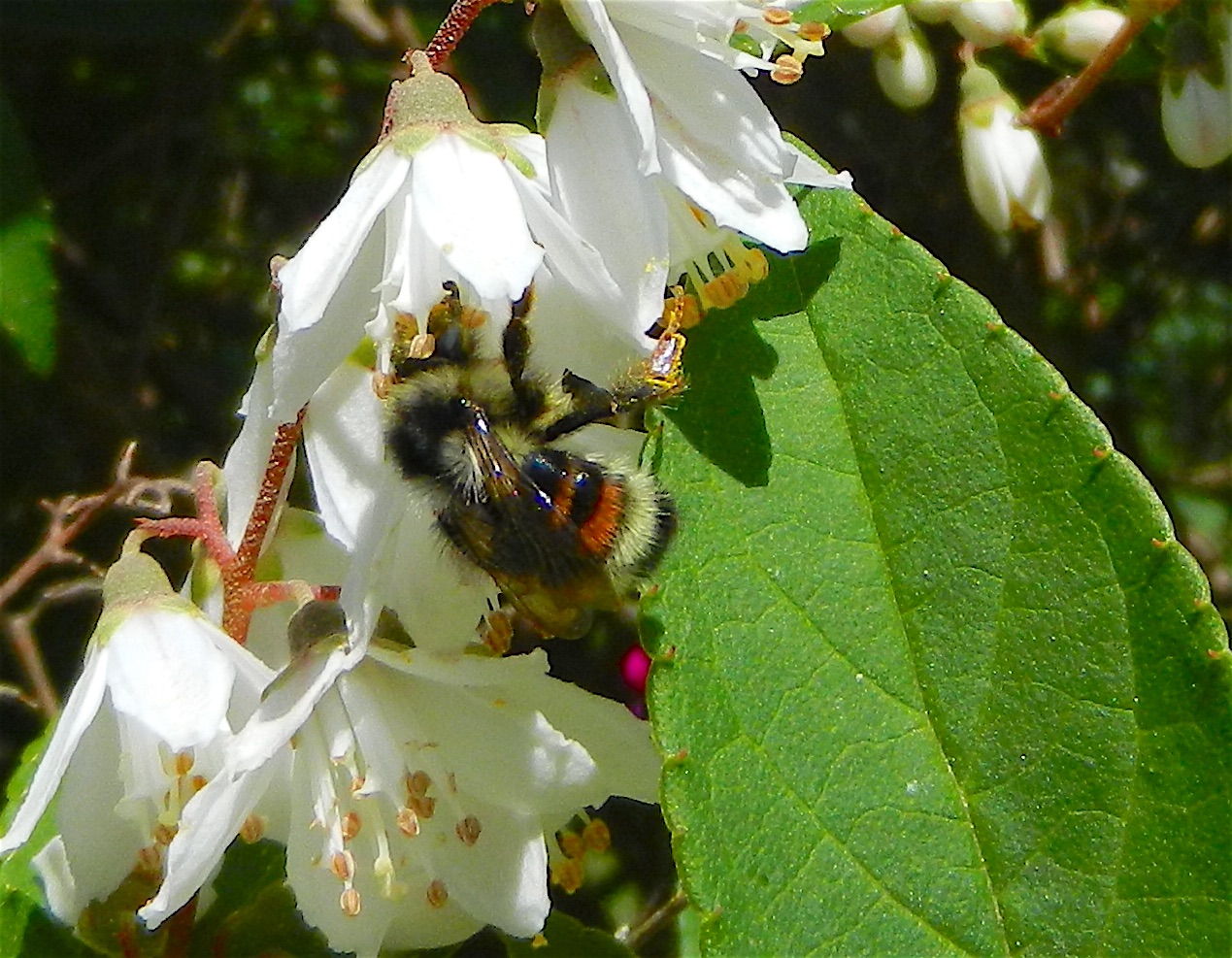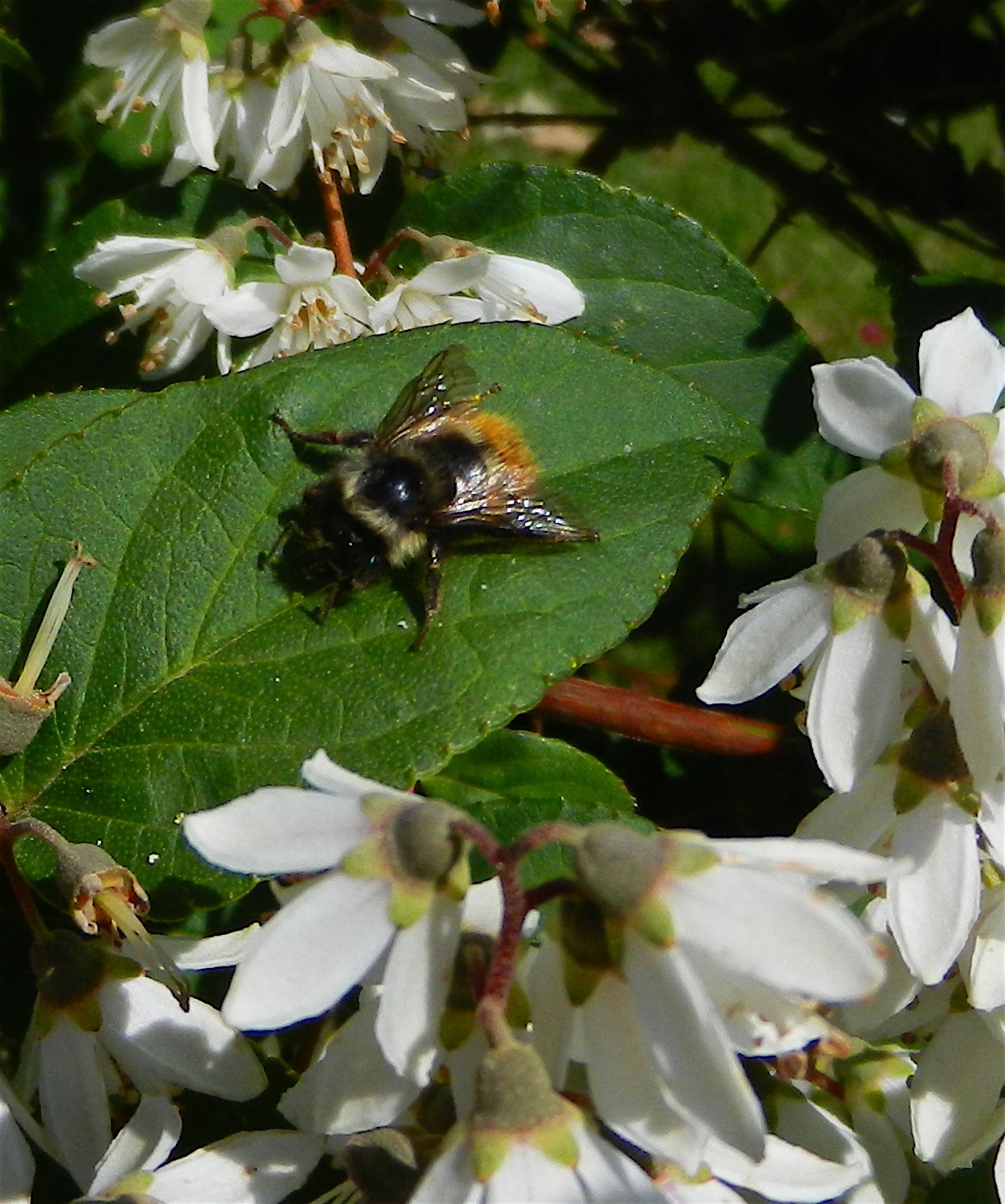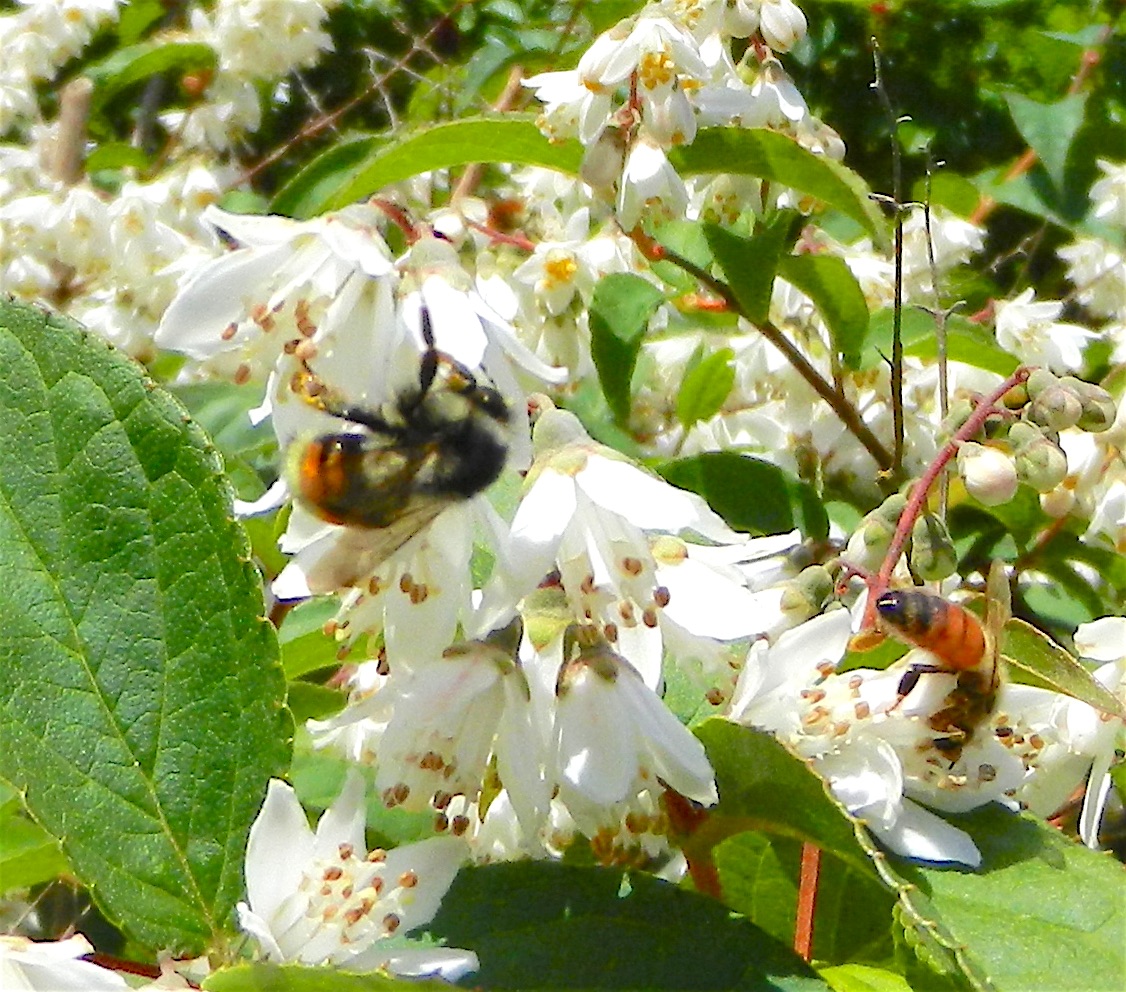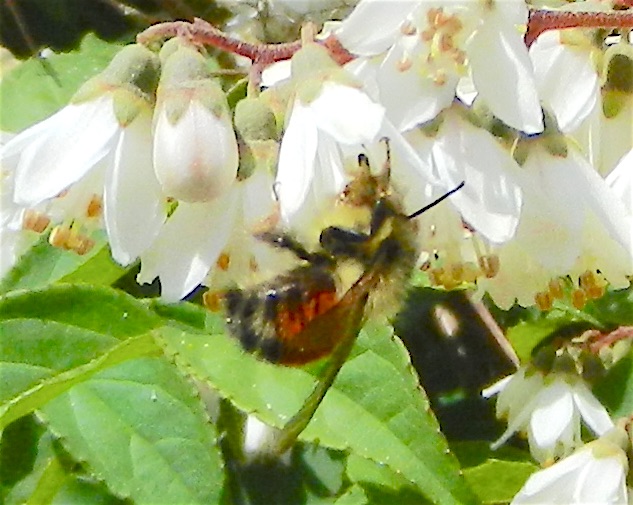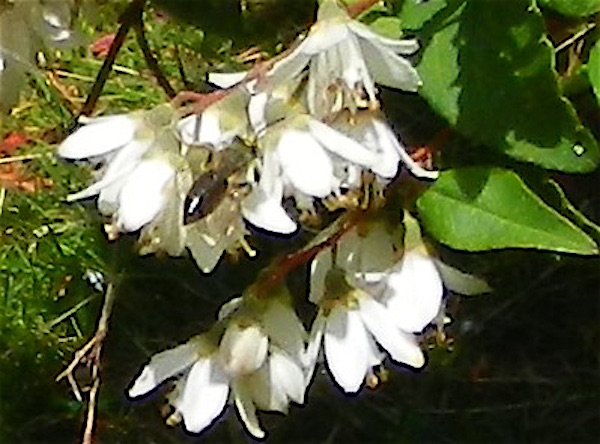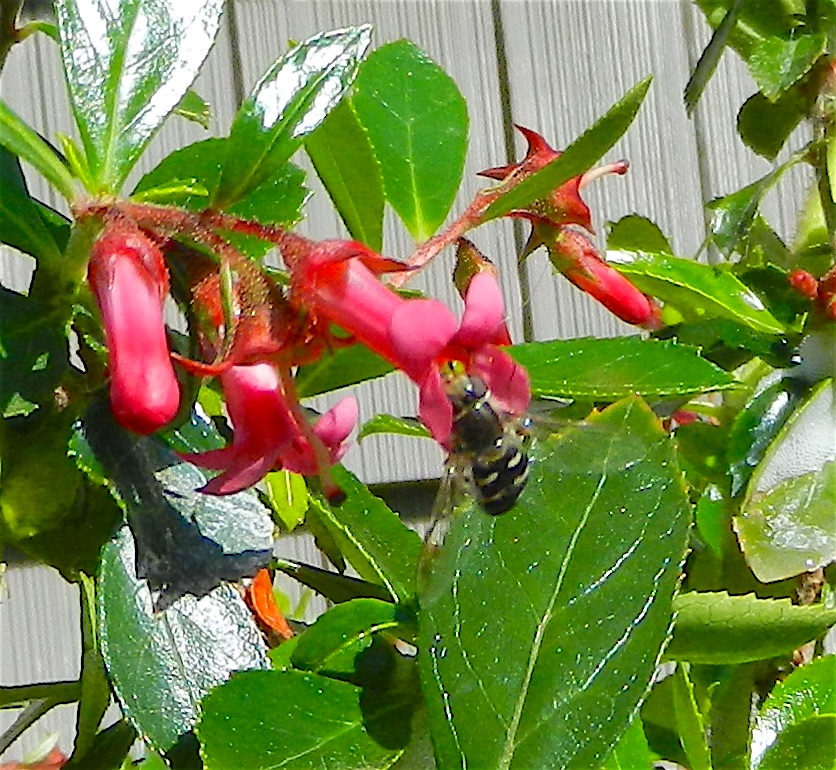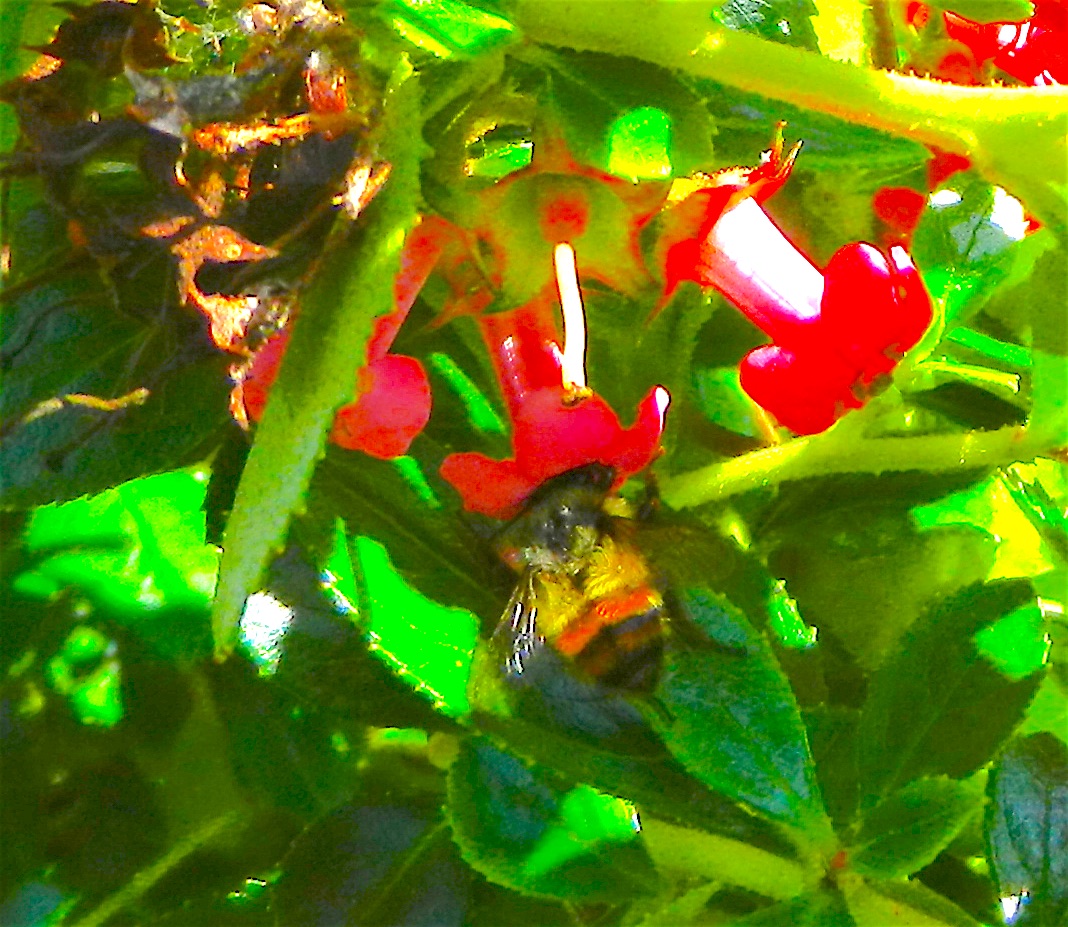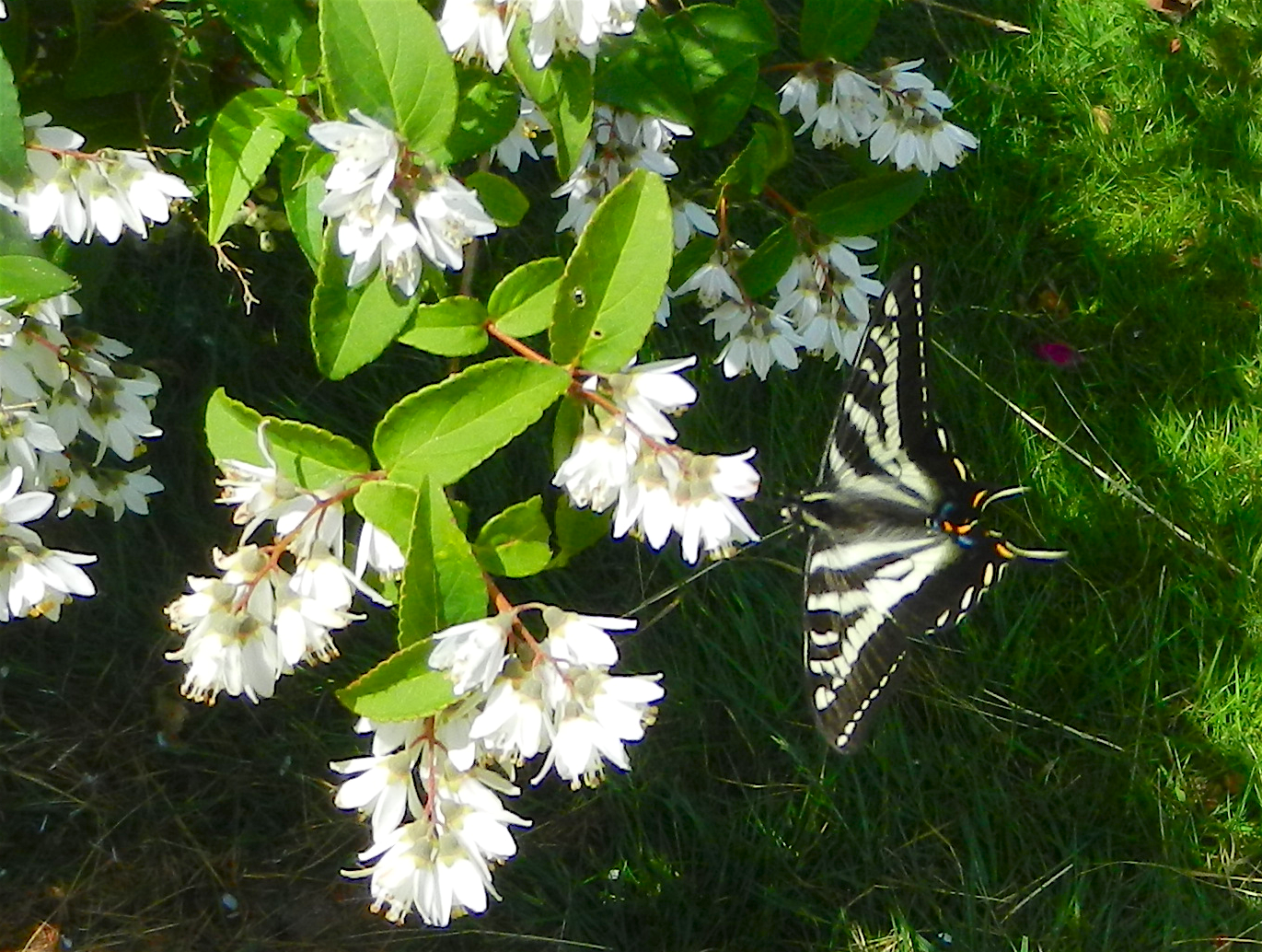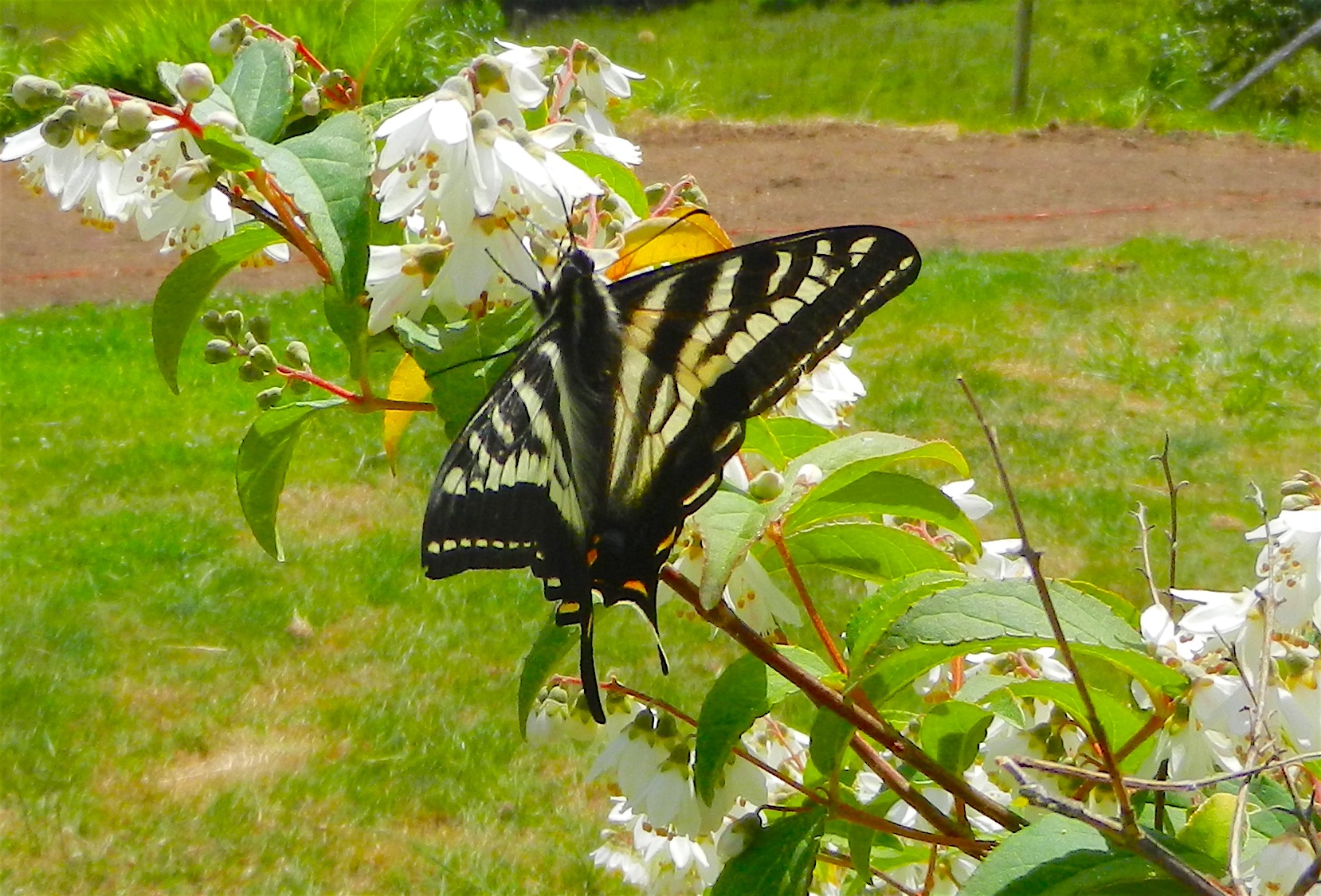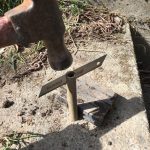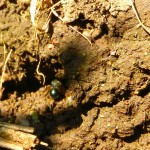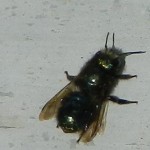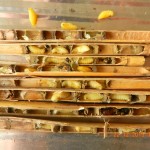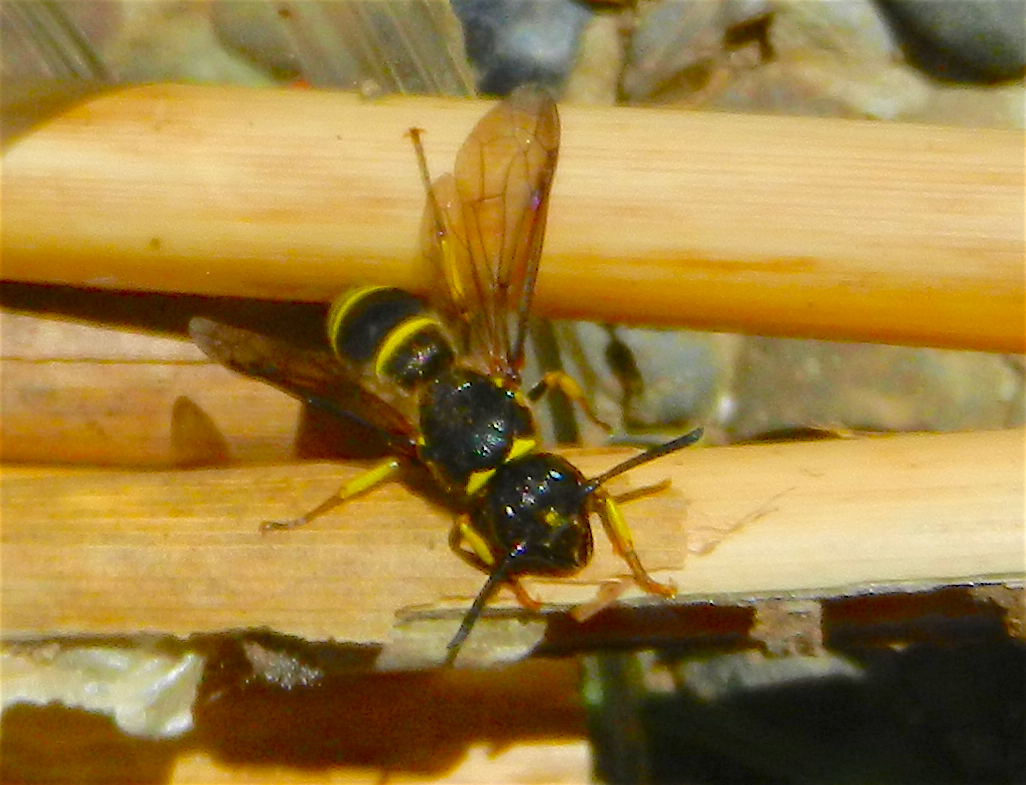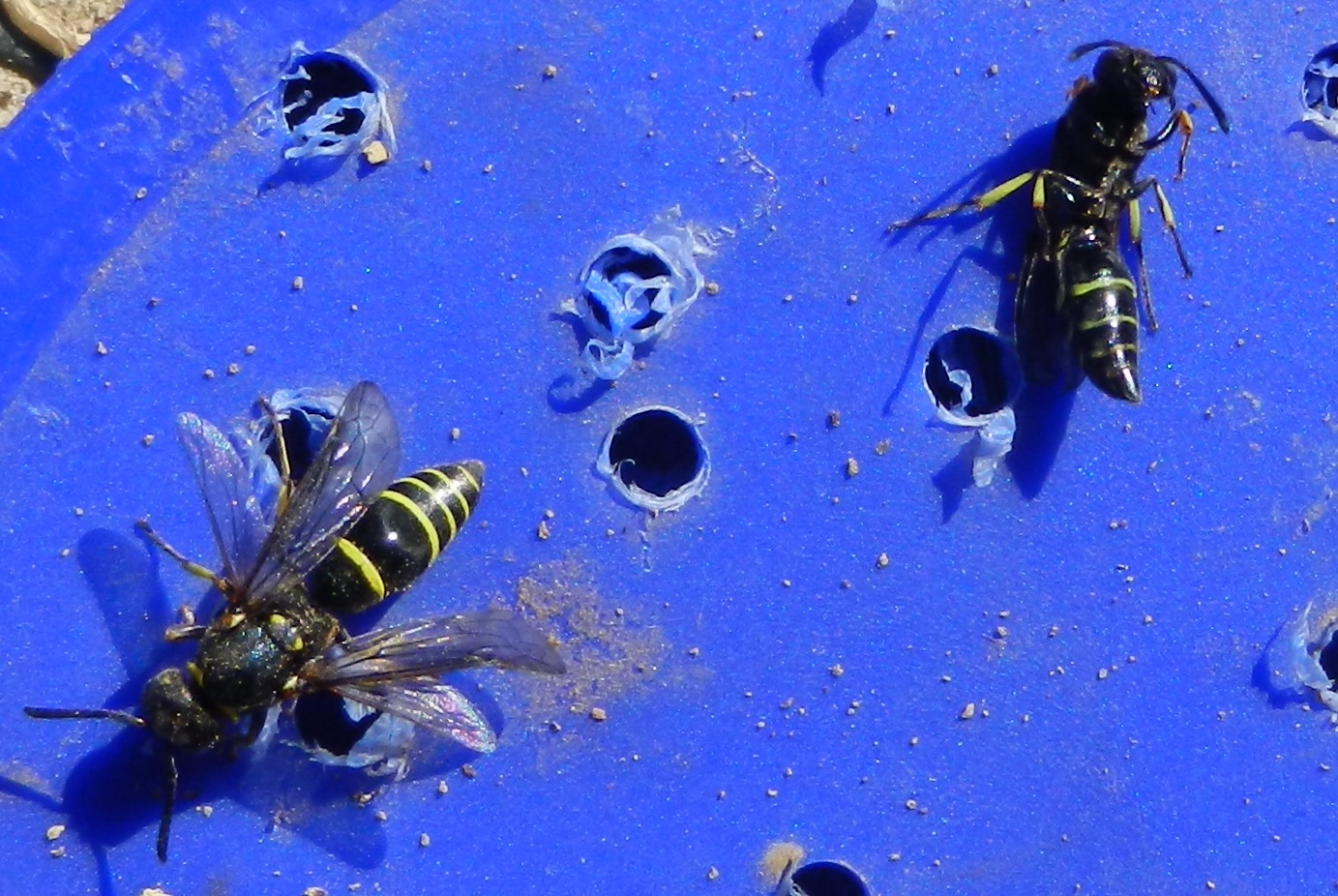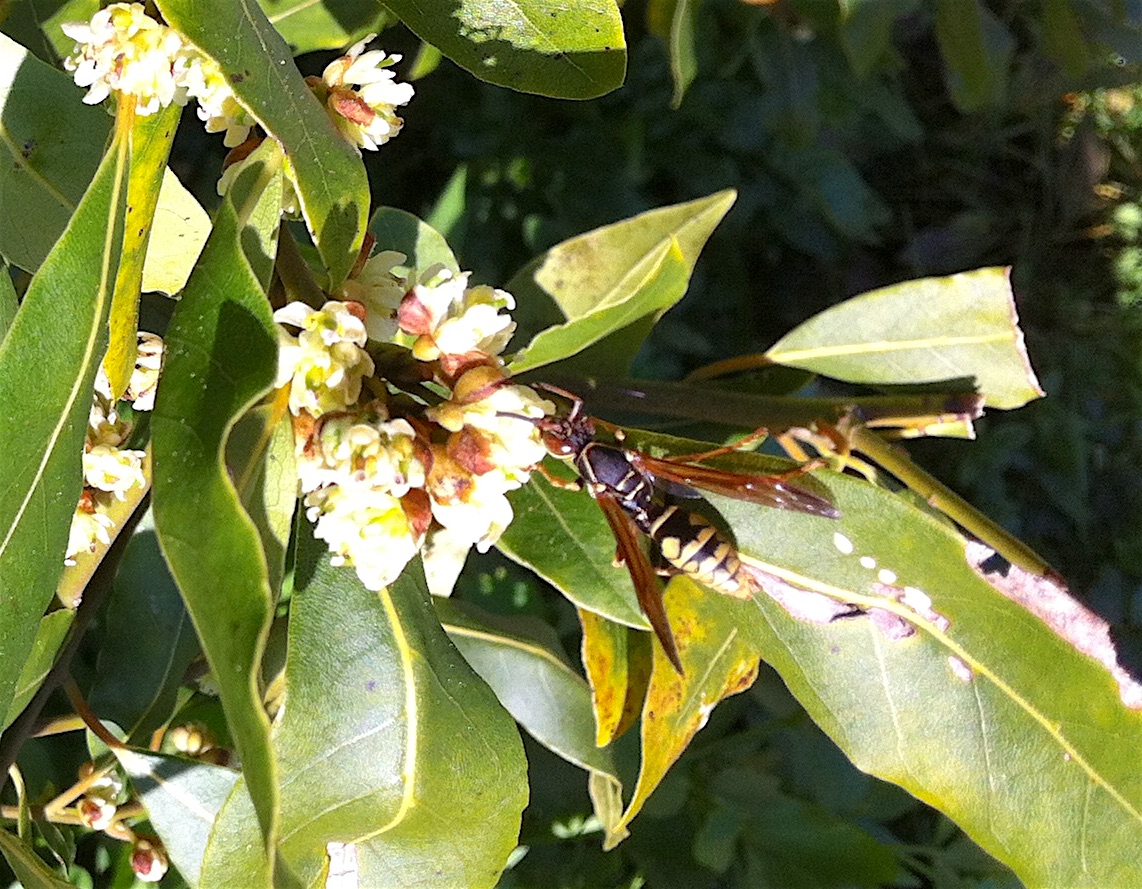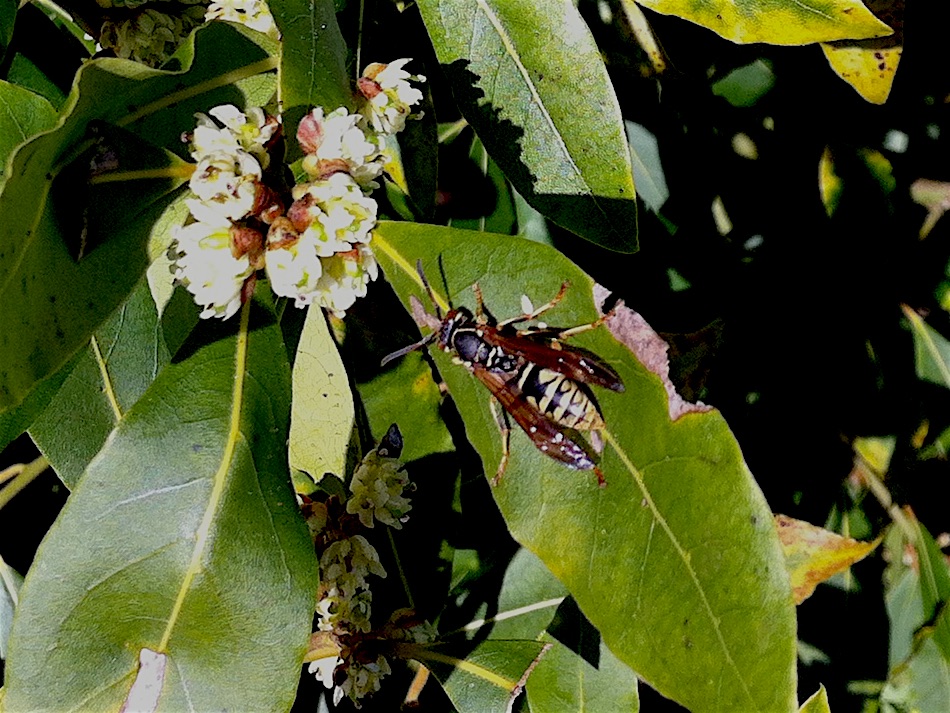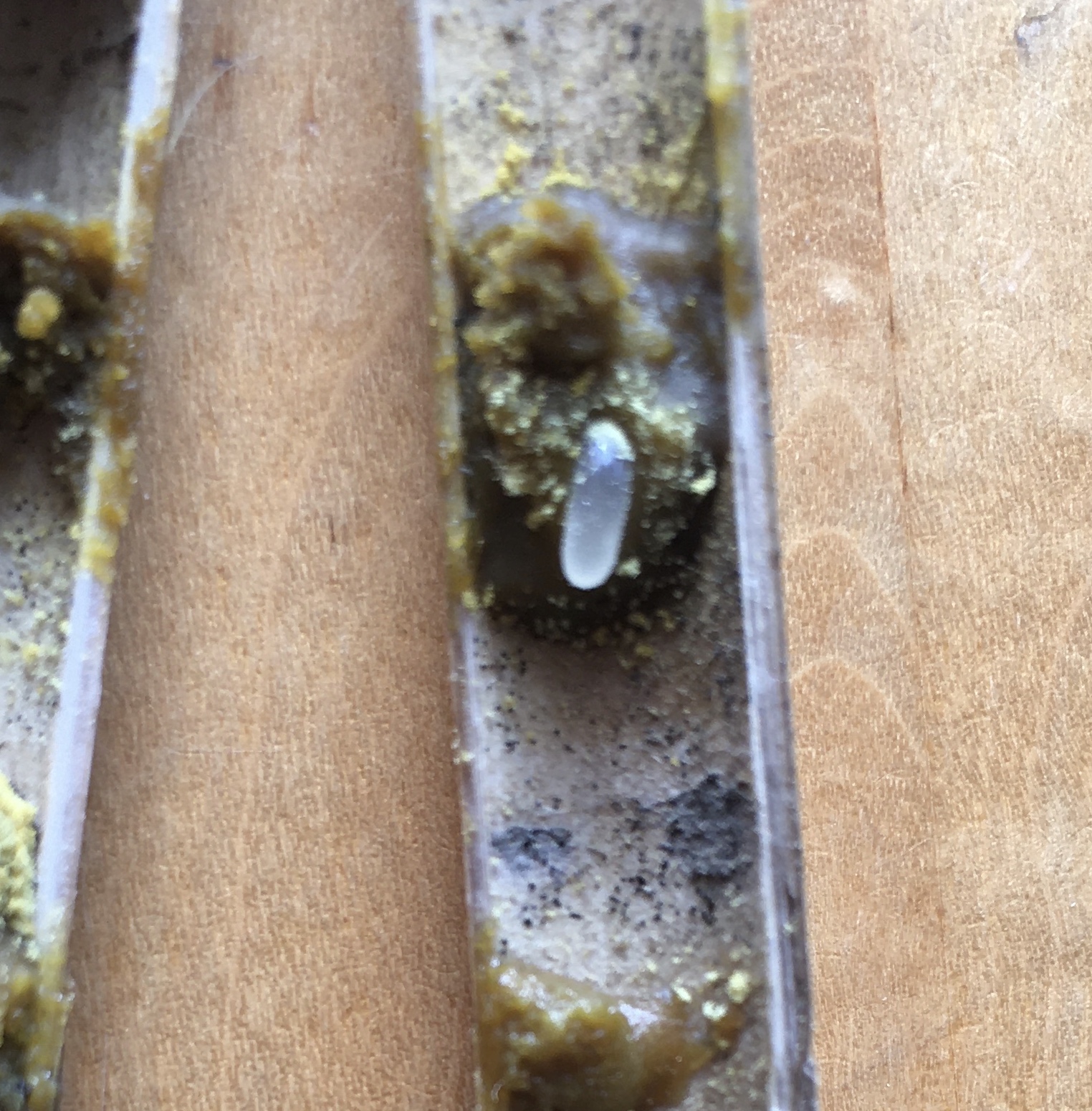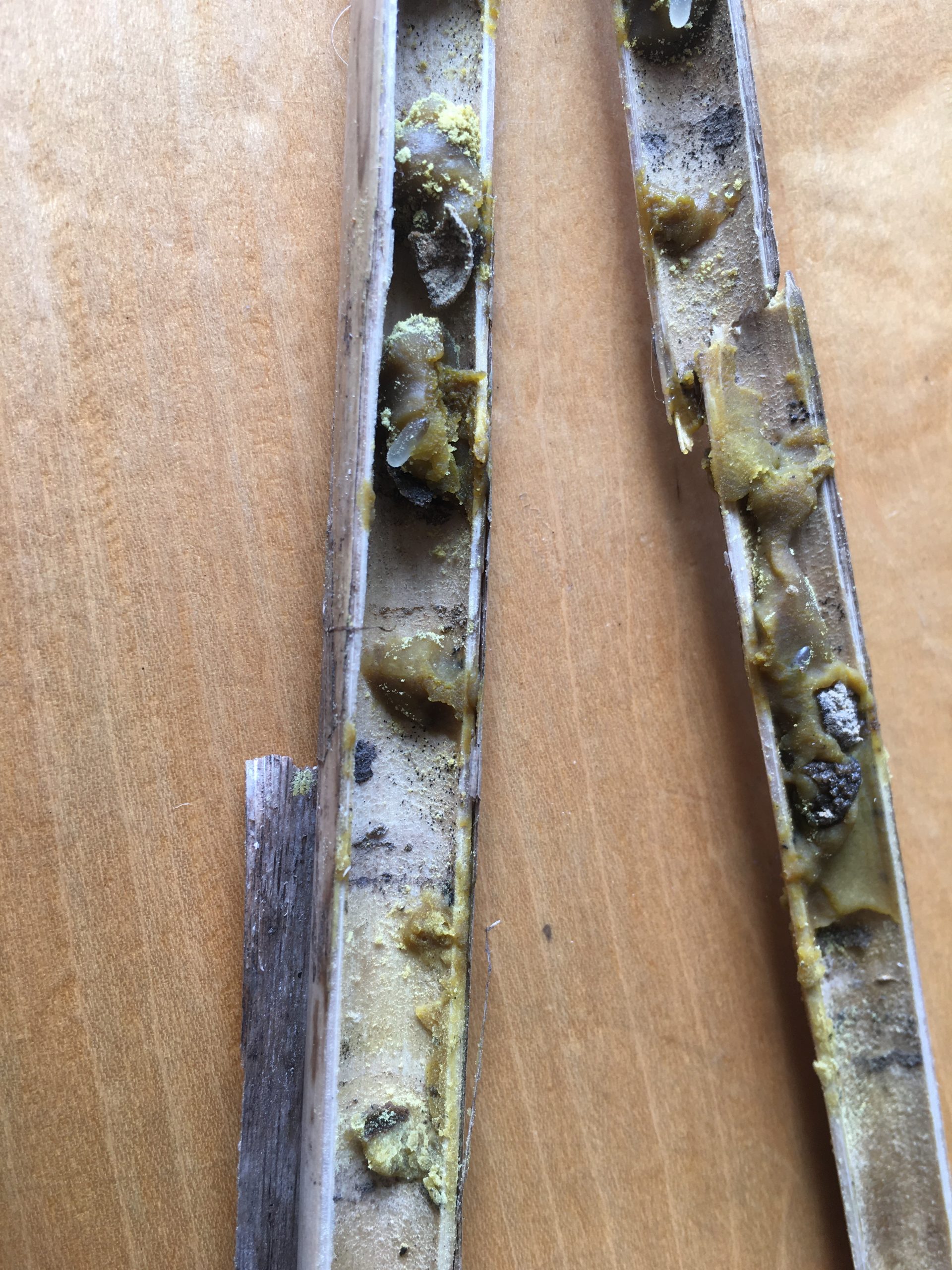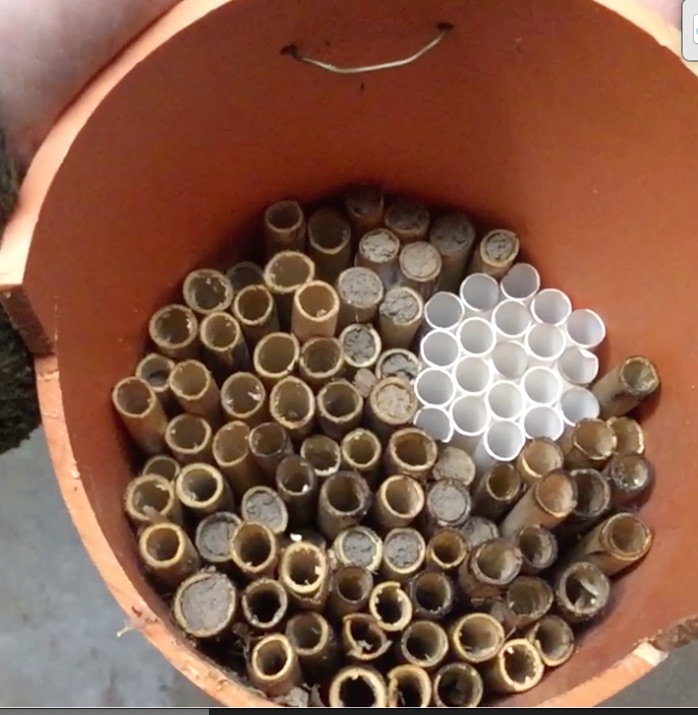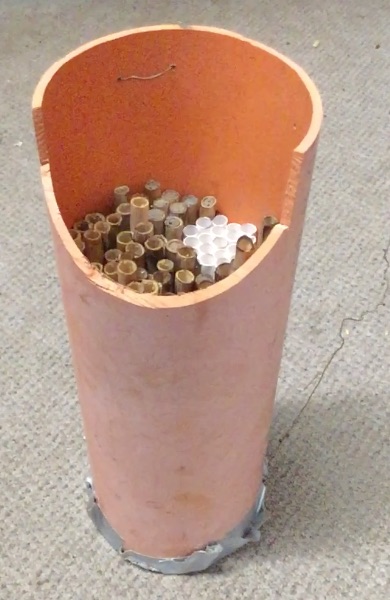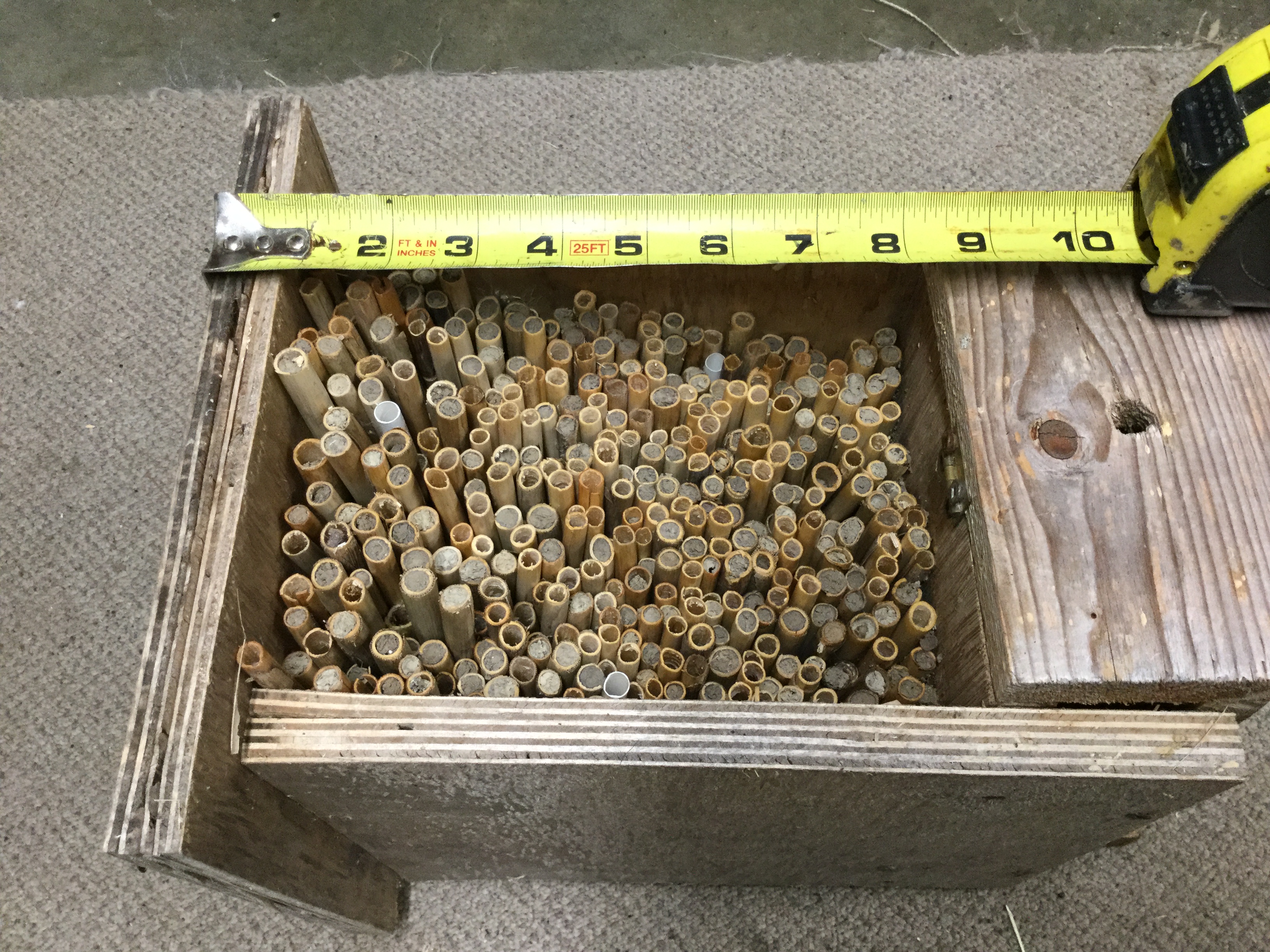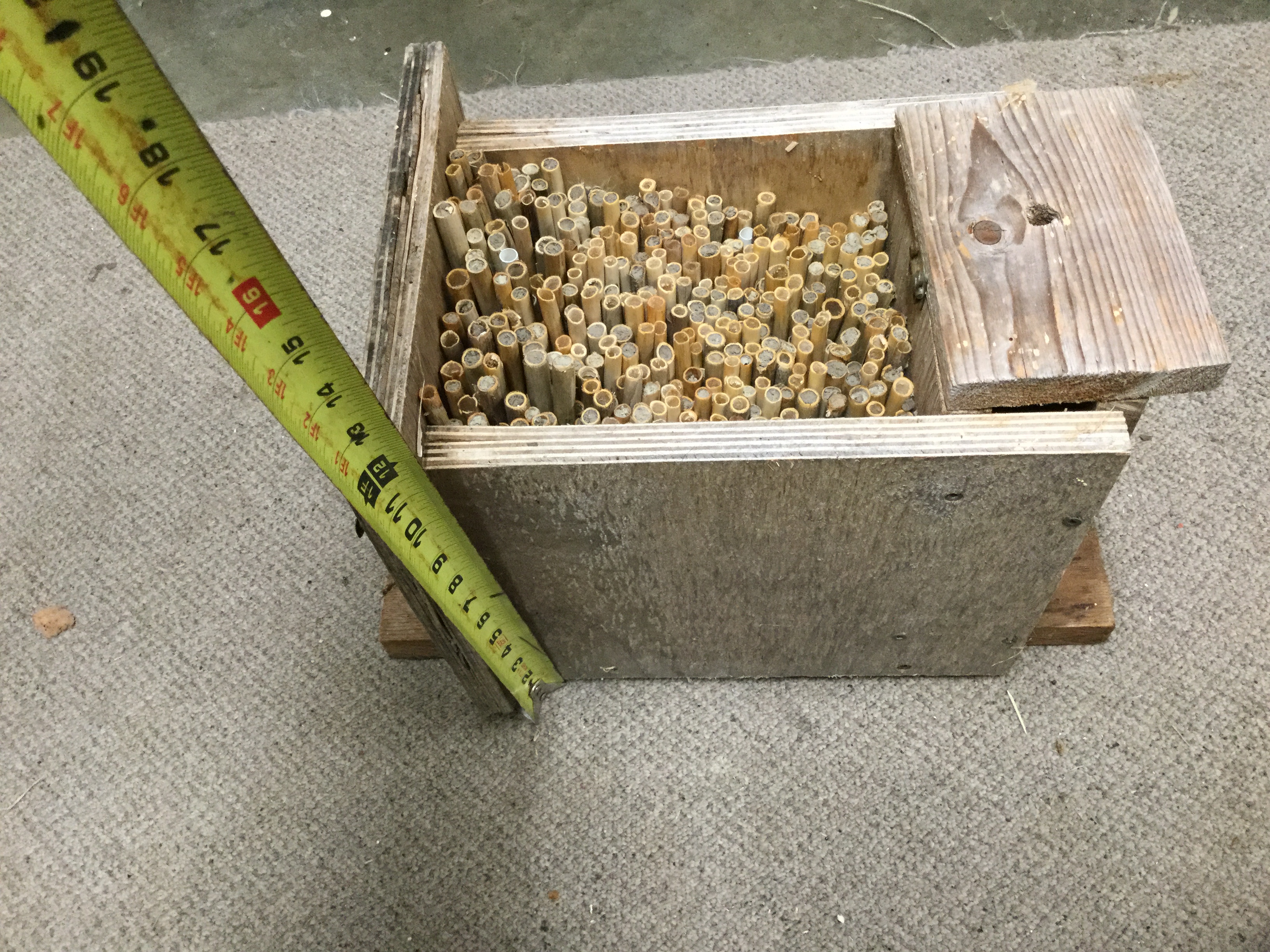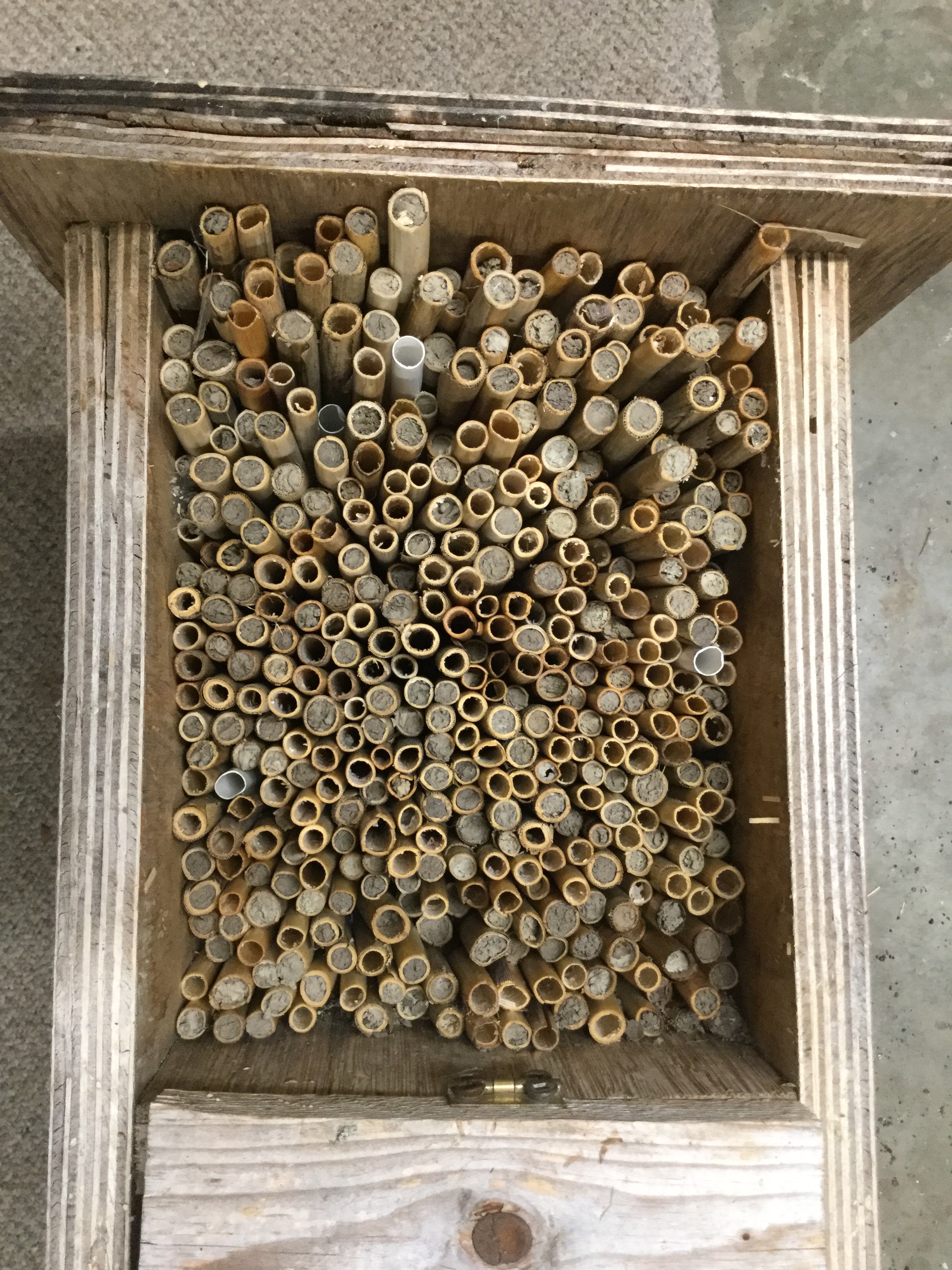ARCHIVAL: This post has been re-dated from 2016 in order to position it closer in the blog to Mason Bee Information
The mason bees have almost stopped their work of pollination by now. However several bumblebee species and honey bees were very active around certain plants in the yard this week.
Category: Mason Bees and Phragmites reed-grass tubes
Mason Bees.. The best pollinator for spring and early summer pollination of your fruit trees.
Making the best of a bad situation
So you have gone out and bought or have been given a Costco bee house, shaped like a pretty alpine bungalow . Only problem is, their design is contrary to all the best practises of mason bee housing.
See the previous post I did on this here:
However, all is not lost. You can rehabilitate the house so that it has a better chance of working .
Steps to follow:
1. Remove all the short bamboo tubes which are glued in .. Just get a screwdriver and pliars and pry them out.
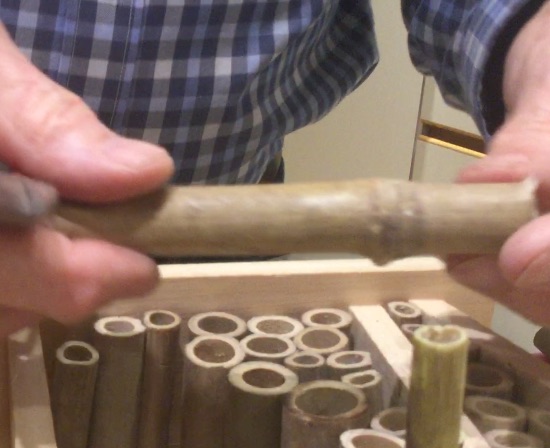
2. Reject the ones with nodes halfway down the tube which allows only a few inches to be useful to the bees. However if you have a drill, you could drill out these tubes.
3. The following diagrams show how you can split the tubes with an exacto blade and then tape them back up. This will allow you to remove the cocoons for cleaning at the end of the season and prevent a deadly buildup of parasitic mites.
4. In the tubes which have too large an opening,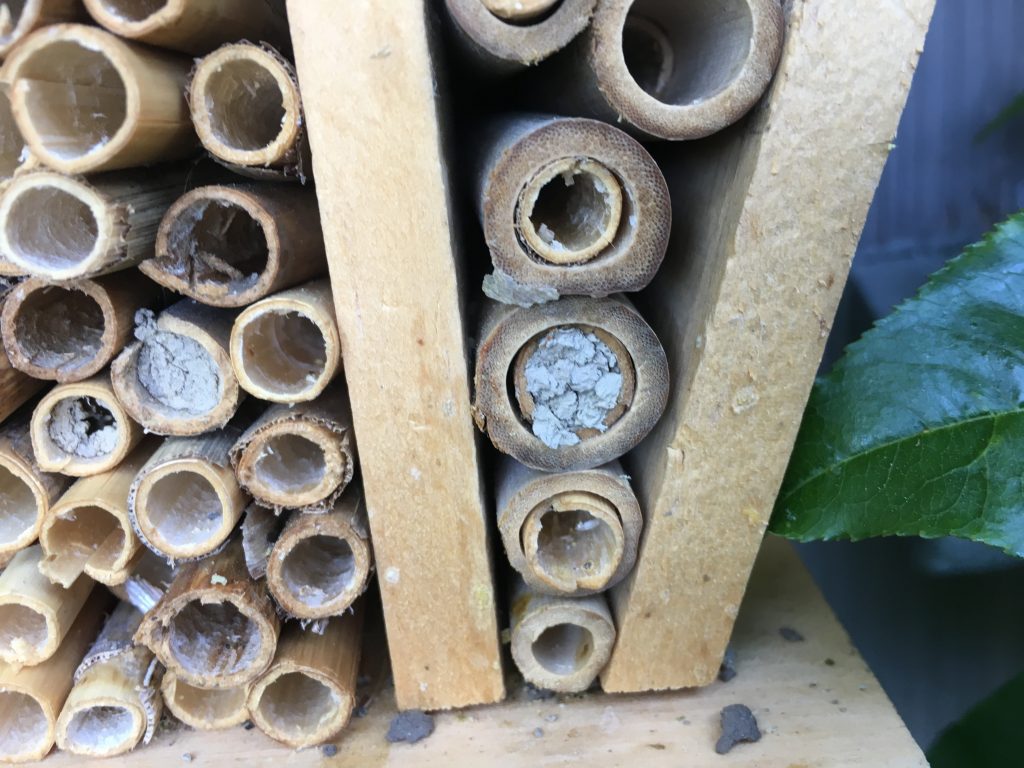 insert tubes of either phragmites reed, cardboard or rolled paper tubes so that these can be extracted at the end of the season to recover the cocoons.
insert tubes of either phragmites reed, cardboard or rolled paper tubes so that these can be extracted at the end of the season to recover the cocoons.
5. Open-ended tubes should have the back end sealed.. I used a glue-gun to do this.
Mason Bees Houses
I have received several inquiries about making homes for Mason Bees. Here are some useful references that may give you ideas. They are expensive to buy and really not that hard to make , just make sure you use the type that can be cleaned out at the end of the season, removing the cocoons cleaning out the parasites and storing them for the winter. Do not use holes drilled in a wood block unless the holes are large enough to have a tube fit inside of them, so that the complete tube is removable. The tube diameter that is best is 5/16” (8 mm) , but a variety of sizes close to this wont hurt.
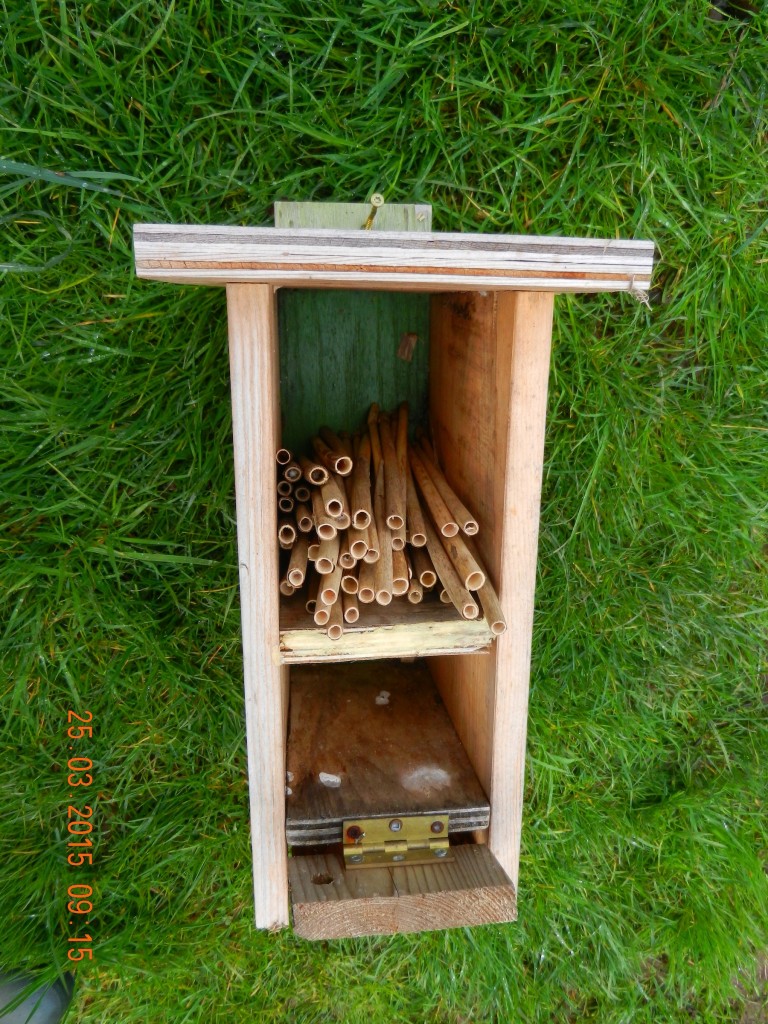
Next winter I will harvest more of the Phragmites tubes so that I will have extras to sell. Then you just need the equivalent of a birdhouse without the front on it.
Mason Bees Depositing eggs
NOTE: I have updated this 2015 post in order to make it appear closer to the other mason bee information

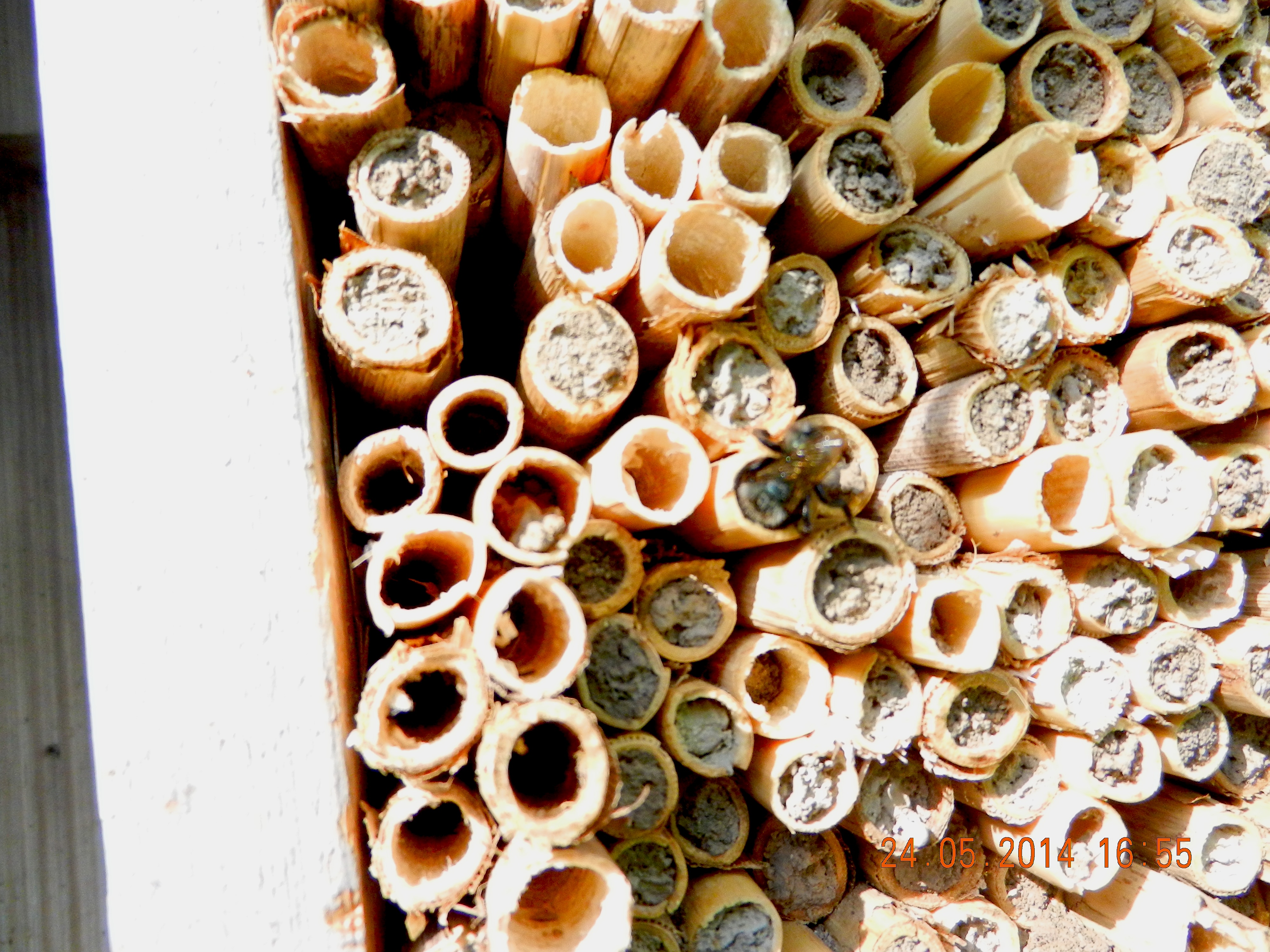
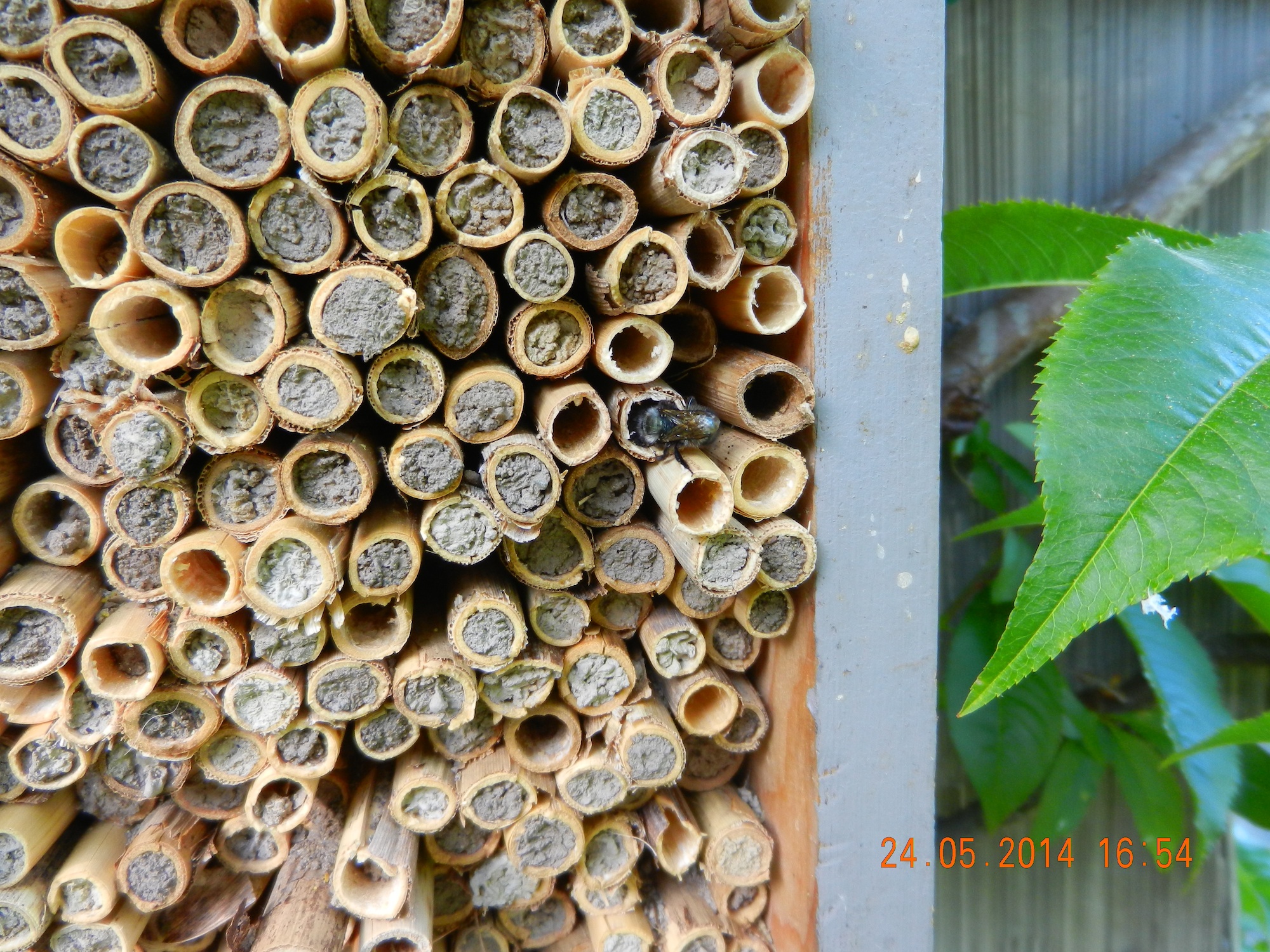
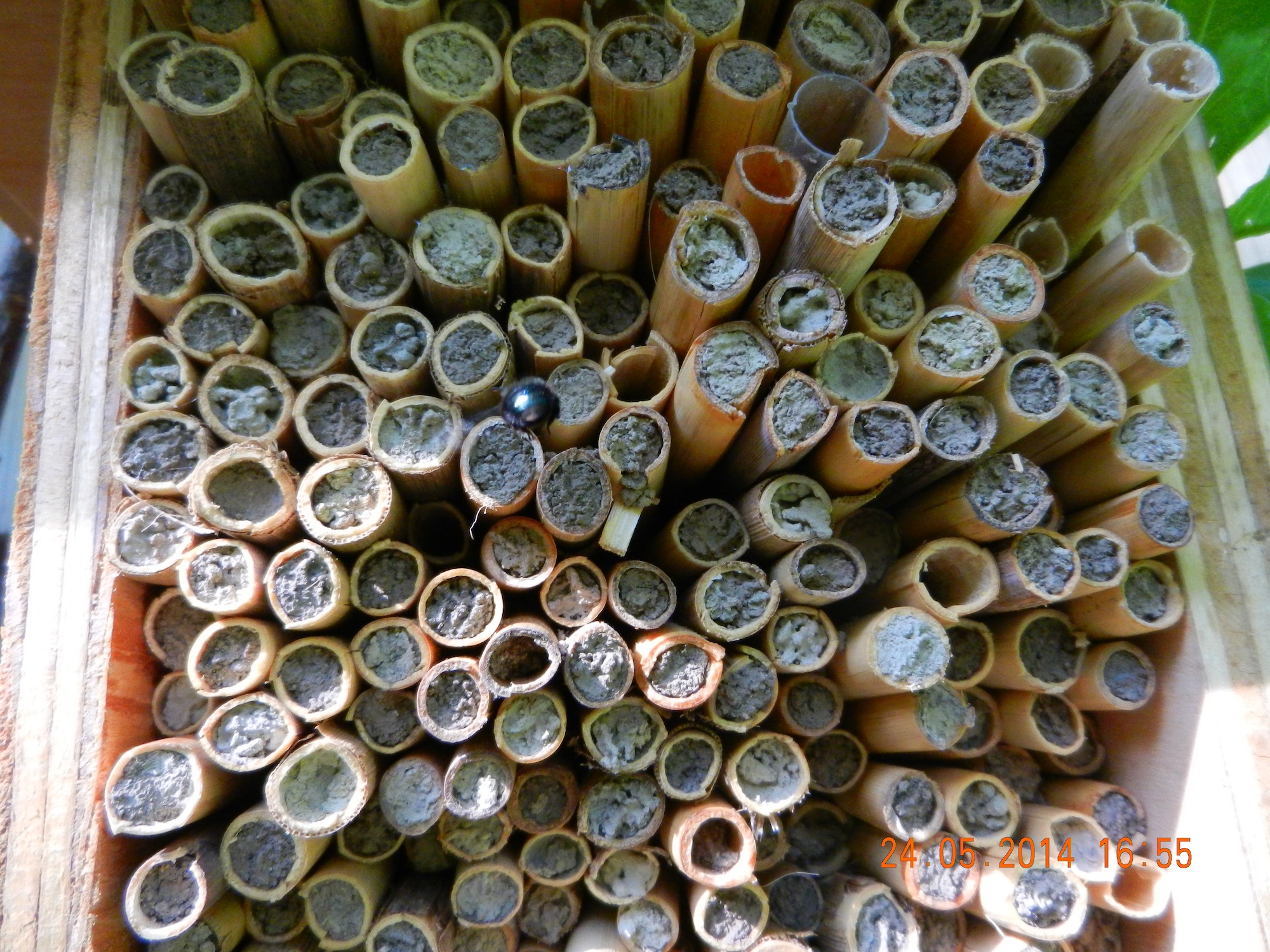
NOTE: In 2024 I have re-dated this post in order to place it closer to the other mason bee posts ..
Destroy Empty Mason Bee Cocoons several weeks later..
A few weeks after your mason bee cocoons have hatched, remove the empty cocoons and any that have not opened and destroy them. In some of the unopened ones you might find the tiny larva of the parasitic mono wasp, referenced here on an earlier post.
Mason Bees need mud!
NOTE: I have updated this 2015 post in order to make it appear closer to the other mason bee information
When Mason bees are laying eggs in their tubes it is essential that they have an easily available source of wet soil for building the individual chambers in which the pollen and nectar are deposited and the eggs will be deposited . Separating each egg chamber is a mud wall and capping the tube at the entrance will be a mud plug. I have dug a trench a few metres from the nest boxes a metre long and about 20 cm deep in which I periodically soak with water. Along the walls of the trench I have poked small tunnels since I have observed that the mason bees prefer to go into horizontal holes to pick up the mud.
Wasp larvae in mason bee tubes yields newly hatched adults.
When cleaning out the mason bee tubes and recovering cocoons in the winter, I came across several tubes which had been completely colonized by another species of bee/wasp. Images and comments on this can be found in this post:
So now I am trying to get this species identified and will update when I find out. June 6 post shows the identification
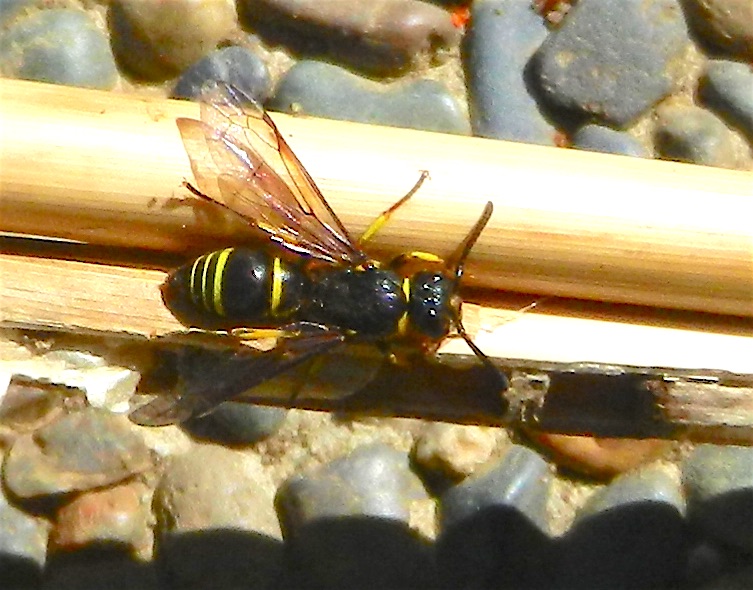
At first I thought these were the paper wasps as they held their wings outspread but the image below of those wasps from the Polistinae family shows a completely different body pattern. Dr. Matthias Buck of the Royal Edmonton Museum is working on samples of these to do DNA sequencing.
Why Cleaning Mason Bee tubes after November is Important
NOTE: I have updated this 2016 post in order to make it appear closer to the other mason bee information
Today I came across two unopened reed tubes which I had forgotten in the refrigerator so the cocoons had not hatched out. The image below shows why it is important to clean your tubes out in the winter and not leave them until late spring.
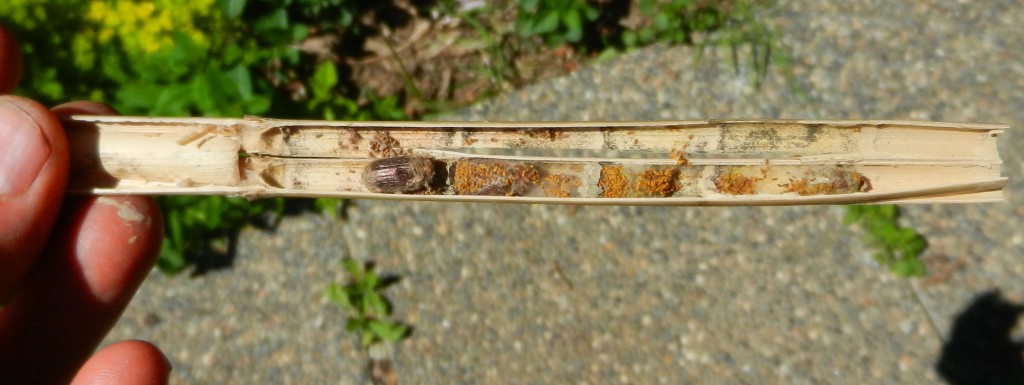
If people leave mason bee homes out unattended from year to year, the parasite population expands . They wouldn’t be so successful in the wild where mason bee nests are more dispersed in holes in wood or under tree bark. . When we provide homes for them however, along with increasing the bee population, we are also multiplying the success of the parasites. So if we are going to encourage bee populations, it is our responsibility to attend to the cocoons in the fall or winter to be sure they are not contaminated with a new generation of mites.
Mason bee eggs
I was cleaning out some phragmites tubes which had not been looked after from last year in a friend’s yard and I assumed that since many of the tubes had penetrated mud plugs (usually a sign of parasitic wasps) then they would be empty. To my surprise, in this one tube I had interrupted a current viable set of eggs deposited on the pollen, and since it was a rainy day, the female was still in the end of the tube. I had not seen the egg at such an early stage before , so i took advantage of the opportunity having ruined this tube, to at least get some photos. I did salvage the few compartments at the end of the tube which hadn’t opened yet, but when a tube is moved this early, there is always a risk of the eggs becoming detached from the food source.
Mason Bee Nesting Tubes: a Comparison
With a variety of information out on the internet on the best tubes to use for Mason Bee culture, I thought I would report here on some of the trials I have run last season which compared different tubes and nestboxes.
In 2018 I placed Phragmites tubes alongside of the commercially available plastic hinged boxes.
For the question .. does availability of the number of nesting tubes determine the success rate?
In the same location as the samples above , I also had a larger supply of tubes available with the following result.. I haven’t calculated the % of successful tubes here. Note also the dimensions of the box.. I used maximum length Phragmites tubes for this box.

